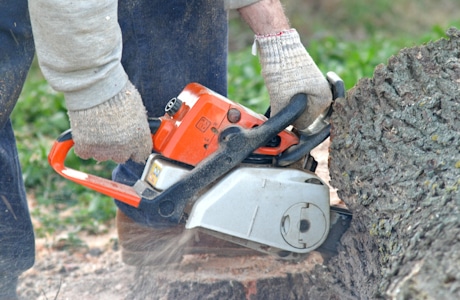Tree removal is a substantial landscaping expense that many homeowners and property owners may encounter at some point. Understanding the elements that determine the cost of tree removal is critical, whether it is due to a tree’s poor health, risk of falling, or simply to make room for new landscaping.
The cost of tree removal can vary greatly based on several critical criteria, including the tree’s size, location, species, health, and the intricacy of the removal process. Additionally, considerations such as local labor costs, accessibility, and the presence of barriers surrounding the tree can all have an impact on the final pricing.
Factors Influencing Cost of Tree Removal
Tree Size
The size of the tree is one of the most important cost drivers. Smaller trees, such as ornamental types, are often less expensive to remove, with expenses ranging from $150 to $800.
Medium-sized trees, such as pines and maples, can cost between $400 and $1,500. Large trees, such as oaks or evergreens, require more manpower and equipment, resulting in expenses ranging from $900 to $3,500 or more.Removal of multiple trees in a sparsely wooded area may cost between $500 and $2,500 per acre, whereas a higher tree density may cost between $3,000 and $6,000 per acre.
Tree Species
The cost of a tree might vary due to differences in wood density and branch structure. Hardwood trees, such as oak and walnut, are more expensive to remove than softwood trees, such as pine or spruce. Furthermore, some species may provide unique removal issues, affecting the overall cost.
Location
The proximity of the tree to structures, utility lines, or other barriers has a significant impact on price. Trees near homes, electrical lines, or other structures necessitate careful planning and sometimes more time-consuming removal approaches.
Expect to pay extra for trees in limited spaces or near structures, with prices ranging from $500 to $2,500 or more.
Health and condition
The cost is also affected by the tree’s health and condition. Diseased, dead, or unstable trees may necessitate particular measures during removal. Handling such trees can be riskier for the tree removal crew, needing additional safety precautions and potentially raising the price.
Access and Equipment
The accessibility of the tree and the equipment required for removal can have a considerable impact on the cost. Trees in difficult-to-reach areas may necessitate the use of specialist equipment such as cranes or bucket trucks, resulting in increased removal costs.
Permits and rules
Local rules and permit requirements might increase the cost. Some governments may demand permits for tree removal, which frequently come with fees. Check local restrictions and, if necessary, figure in permission expenses.The lowest cost of a permit is $60–150.
Stump Removal
Stump removal is often not included in the main tree removal cost. Stump removal rates vary depending on the size and accessibility of the stump, and can range from $75 to $450 or more per stump. If you want the stump removed, make sure you get a separate quote.
Debris Cleanup
Cleaning up after tree removal might be an additional expense. Some tree removal firms include debris cleanup in their pricing, while others may charge extra for this service. Before employing a service provider, clarify this with them.
Emergency Tree Removal
If a tree offers an immediate threat, such as after a storm or due to disease, emergency tree removal services may be required. Because of the urgency and necessity for a fast reaction, these services frequently cost more.it costs 5000$
Physical and mental health
The health and condition of the tree can have a big impact on how much it costs to remove it. Diseased or dead trees are frequently more unstable and may necessitate additional precautions during removal to avoid falling branches or other hazards. Healthy trees, on the other hand, are often easier and less expensive to remove.
Add-On Services
Additional services, such as chipping tree branches, transporting away logs, or comprehensive cleanup of the removal site, may be required in addition to the core removal operation. Each of these services has its own set of pricing, so it’s critical to discuss your unique requirements with the tree removal pros
Professional vs Do-It-Yourself Tree Removal
While some homeowners choose to do their own tree removal to save money, it is critical to understand the risks involved. Professional tree removal services include knowledge, insurance, and the necessary equipment, resulting in a safer and more effective removal operation.
How Cost of Tree Removal Can Be Reduced?
Numerous Tree Removal: If you have numerous trees that need to be removed, consider having them all removed at once. Tree removal businesses may provide discounts for bulk removals because they can use the same equipment and staff for many trees in close proximity.
Selective pruning: Instead of complete eradication, inquire about the possibilities of selective pruning or trimming. This could be a cost-effective solution for trees that are still healthy but require some maintenance.
DIY Debris Cleanup: To save money on cleanup, offer to tackle the debris disposal yourself. Because most tree removal businesses charge extra for this service, disposing of branches and wood on your own can be a substantial cost saver.
Plan ahead of time: Schedule tree removal during the off-season or when tree removal businesses are less active. This can occasionally result in lower rates.
Local competition: Get quotations from several local tree removal firms to compare pricing. Competing companies may offer competitive pricing to get your business.
Limit Access Difficulties: Make sure the tree is easily accessible. Trees in narrow locations or difficult-to-reach areas may necessitate specialist equipment, raising the expense.
Consider Stump Removal: If you don’t need the stump removed right away, you can postpone this step of the procedure to lower the initial cost of tree removal.
Proper Maintenance: Regularly maintain your trees through pruning and care to increase their lifespan and maybe postpone the need for removal.
Check Your Insurance: Determine whether your homeowner’s insurance covers tree removal in specific scenarios, such as storm damage. If relevant, you could save money on removal charges.
FAQS
What factors influence the cost of tree removal?
Tree size, species, location, health, access, equipment needed, permits, stump removal, debris cleanup, and emergency removal are key factors.
What is the average cost of removing a tree?
The national average in the United States is approximately $800, but costs can range from $150 for smaller trees to $2,500 or more for large or complex removals.
Is stump removal included in the tree removal cost?
Stump removal is typically not included and may incur additional charges, ranging from $75 to $450 or more per stump.
Are there ways to reduce the cost of tree removal?
Yes, strategies like scheduling multiple tree removals together, selective pruning, DIY debris cleanup, and obtaining multiple quotes can help reduce costs.
Conclusion
The cost of tree removal varies widely based on multiple factors, including tree size, species, location, and additional services like stump removal. It’s essential to obtain estimates from local tree removal companies and consider ways to optimize the process while ensuring the safety and health of your property.





